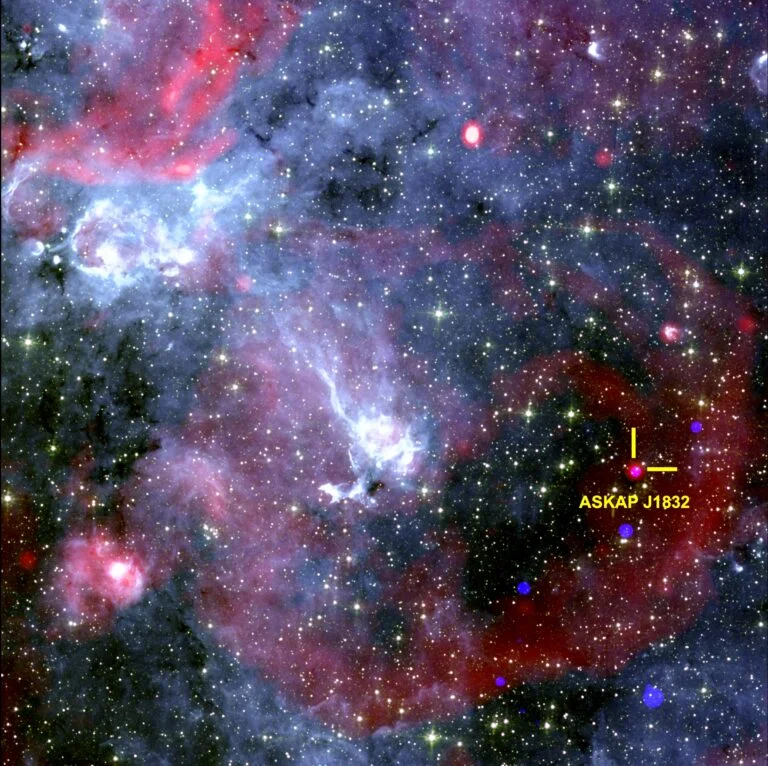
Mystery Deepens: Newly Discovered Repeating Radio Source Flashes X-Rays, Baffling Astronomers
A newly discovered cosmic object, ASKAP J1832-0911, located 15,000 light-years away, is challenging our understanding of the universe. For the first time, a long-period radio transient (LPRT) has been detected emitting both radio waves and X-rays, a phenomenon that has left astronomers scratching their heads. This unexpected discovery, made possible by the combined efforts of the Australian Square Kilometer Array Pathfinder (ASKAP) and NASA's Chandra X-ray Observatory, opens up new avenues for understanding these enigmatic celestial bodies.

ASKAP J1832-0911 emits powerful bursts of radio waves for two minutes every 44 minutes. What makes it unique is the simultaneous emission of X-rays, detected by the Chandra X-ray Observatory. Dr. Ziteng (Andy) Wang of the International Center for Radio Astronomy Research (ICRAR) described the X-ray detection as “finding a needle in a haystack.” The synchronized timing of the radio and X-ray peaks provides strong evidence that they originate from the same source.
The discovery was a stroke of luck. "The ASKAP radio telescope has a wide field view of the night sky, while Chandra observes only a fraction of it. So, it was fortunate that Chandra observed the same area of the night sky at the same time,” Wang explained.
Despite the breakthrough, the exact nature of ASKAP J1832-0911 remains a mystery. Astronomers are considering two primary possibilities: an old magnetar or a binary system involving a highly magnetized white dwarf star. A magnetar, a neutron star with an incredibly strong magnetic field, could potentially produce the observed emissions. Alternatively, the source could be a pair of stars, one of which is a white dwarf with an exceptionally powerful magnetic field. However, existing theories struggle to fully explain the observed characteristics.
The research team acknowledges that neither of these explanations perfectly fits the data. Wang noted that if ASKAP J1832-0911 is indeed a red and white dwarf pairing, it would require the most magnetized white dwarf ever found. While the required magnetic field is within the realm of possibility, Wang suggests an old magnetar is a more likely contender.
Notably, the team has been unable to detect the source at wavelengths between radio and X-ray. This is not entirely surprising, as the location is in a crowded part of the galaxy, approximately 15,000 light-years away. An immense amount of dust could be obscuring the object making it impossible to observe in optical wavelengths. Infrared searches have also been unsuccessful.
ASKAP J1832-0911 is one of about ten Long-Period Transients (LPTs) that were found in recent years. This discovery offers a unique chance to study these previously poorly understood objects and learn more about the universe. This is the first time that such bursts have been seen in X-rays.
"Finding one such object hints at the existence of many more,” said Professor Nanda Rea of the Spanish Institute of Space Science.
This discovery highlights the importance of multi-wavelength astronomy and the power of combining observations from different telescopes. What do you think is the true nature of this mysterious repeating radio source? Share your thoughts and theories in the comments below!